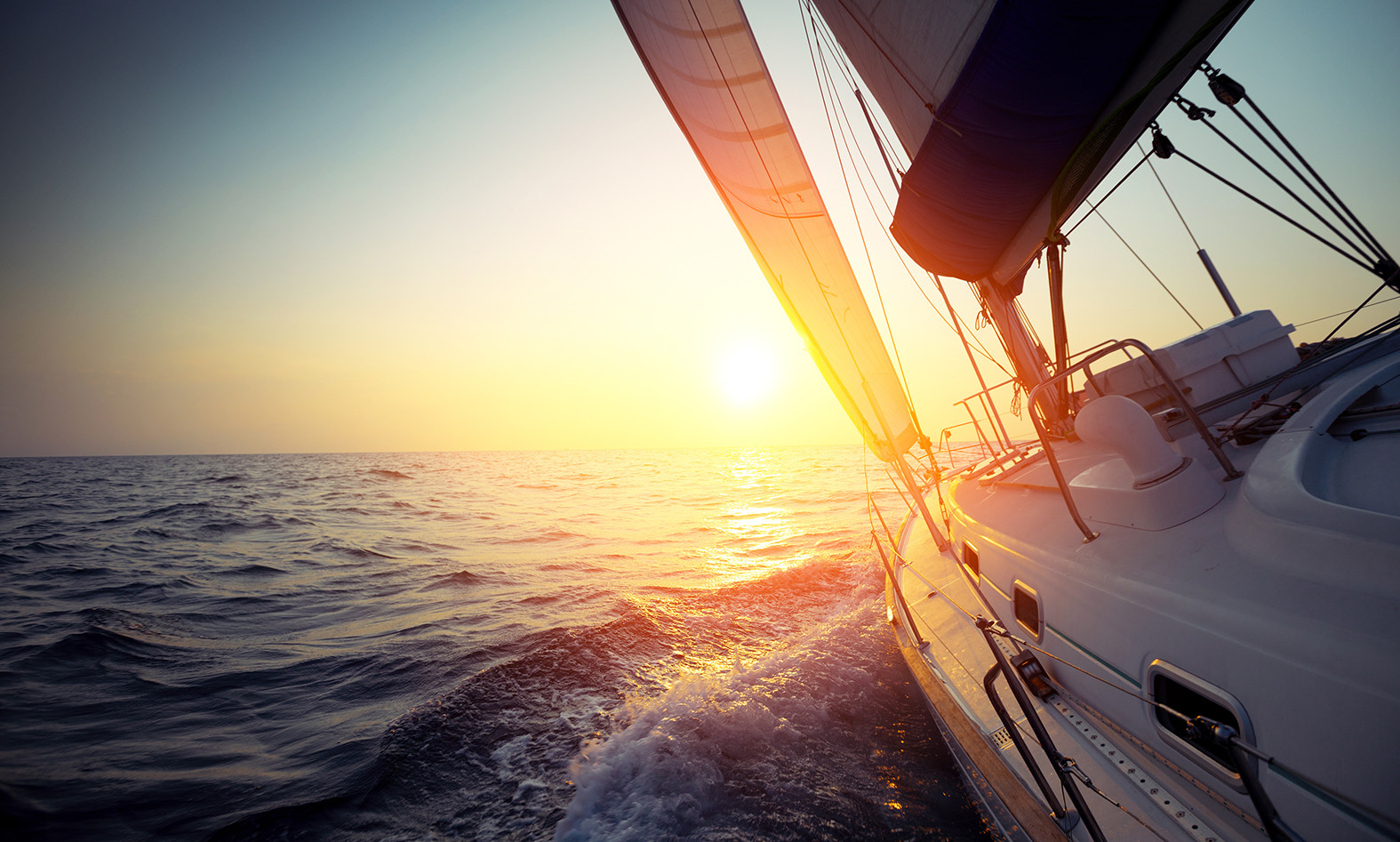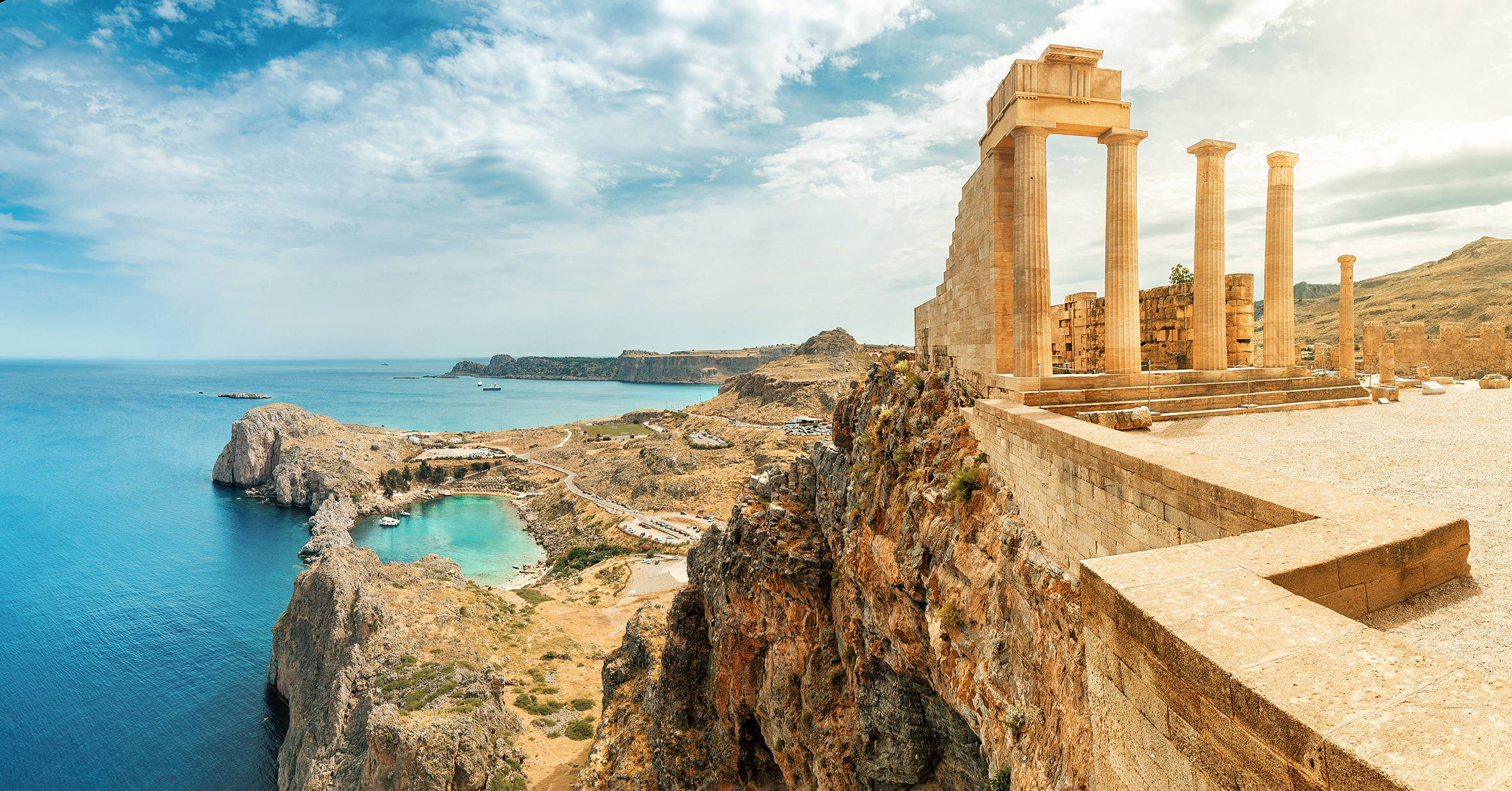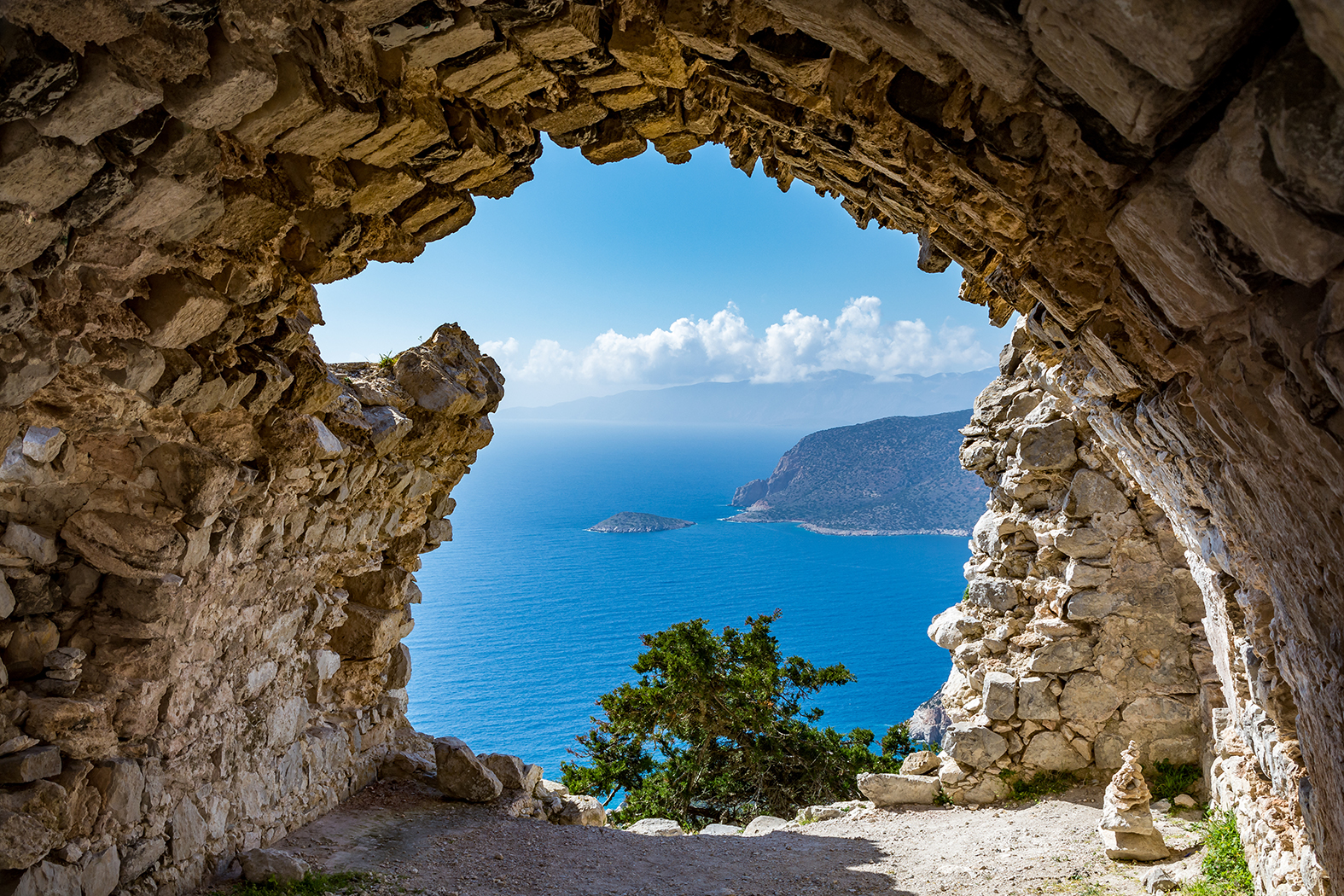The Dodecanese Islands, a sun-kissed archipelago in the southeastern Aegean Sea, offer a captivating blend of history, culture, and natural beauty. With over 150 islands, each with its unique charm, the Dodecanese promises unforgettable experiences. From the medieval grandeur of Rhodes to the serene beauty of Patmos, these islands beckon travelers to explore their rich past, stunning landscapes, and vibrant culture.
Dodecanese
Explore Dodecanese' Timeless Beauty
The Dodecanese, a stunning archipelago in the Aegean Sea, boasts a blend of ancient history and vibrant culture, with charming villages and pristine beaches that beckon visitors year-round. Each island, from the majestic Rhodes to the serene Patmos, offers unique landscapes, archaeological treasures, and crystal-clear waters, inviting exploration and relaxation. The timeless beauty of the Dodecanese is further enhanced by its rich culinary traditions and warm hospitality, creating an unforgettable experience for travelers.
Learn more about:
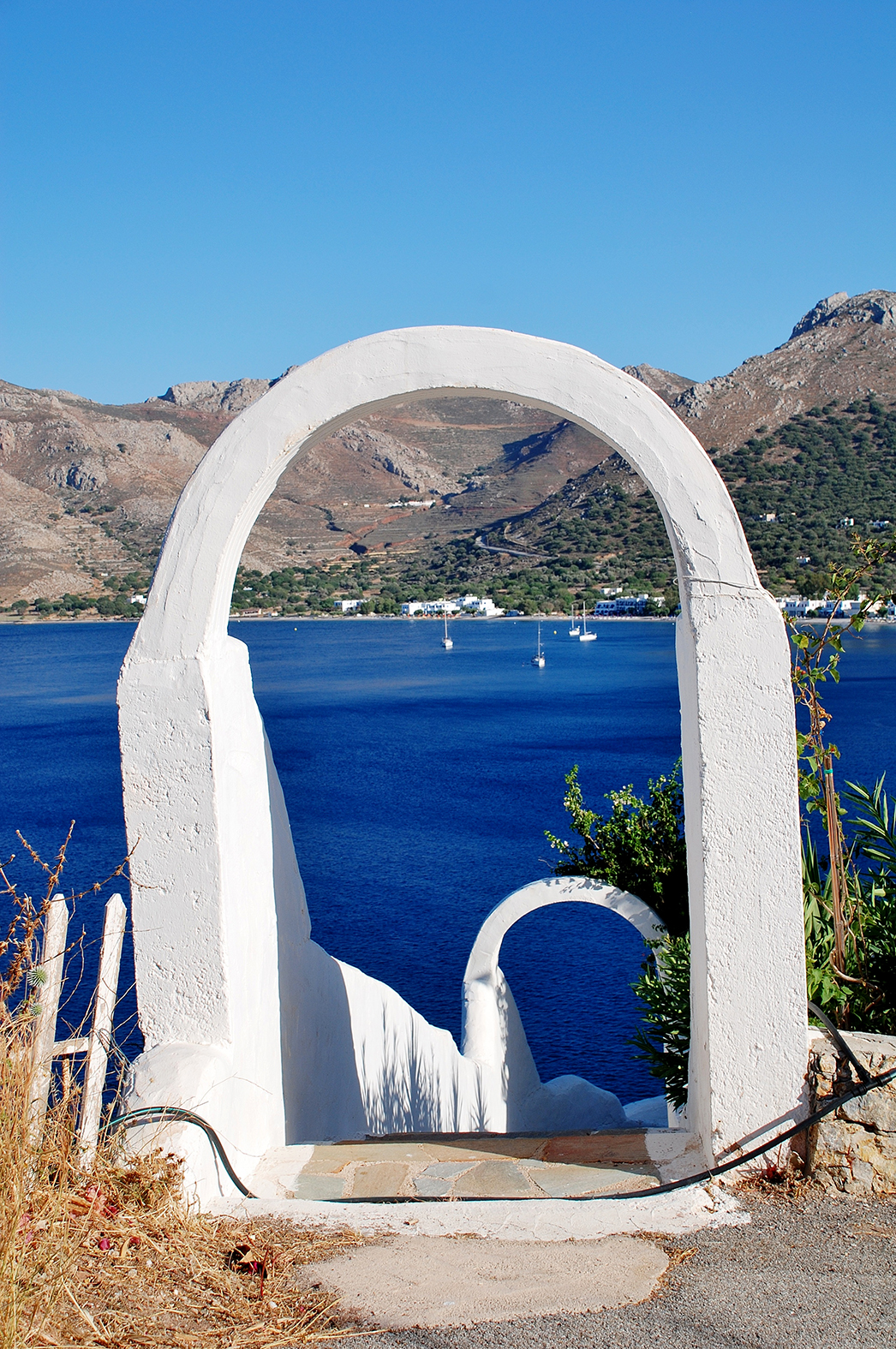

A Sailor's Paradise
The Dodecanese Islands offer a sailing paradise with crystal-clear waters, stunning coastlines, and picturesque harbors. Explore historic islands like Rhodes and Patmos, discover hidden coves and beaches, and indulge in delicious local cuisine. With its perfect blend of adventure and relaxation, the Dodecanese is a dream destination for sailors.
A Journey Through History
The Dodecanese islands have witnessed a rich and diverse history, shaped by various civilizations. From the ancient Greeks and Romans to the Byzantine Empire, the Knights of St. John, and the Ottoman Empire, each era has left its mark on these islands. In the 20th century, the Dodecanese were annexed by Italy and later became part of Greece, bringing their history full circle and solidifying their Greek identity.
Island-Hopping Advetures
While the Dodecanese Islands are renowned for their stunning coastal beauty, they also offer exciting inland adventures. Explore the medieval Old Town of Rhodes, visit the ancient sites of Lindos and Kamiros, or hike through the picturesque landscapes of Kalymnos and Patmos. Immerse yourself in the rich history and culture of these islands, and discover hidden gems away from the coast.
When is the best Time to Visit Dodecanese?
The ideal time for sailing in Greece typically spans from late spring to early autumn, from May to October.
During summer (June to August), warm weather and extended daylight make for ideal sailing conditions, though the Meltemi winds can sometimes create challenging conditions, especially in peak season.
The best time to sail in the Dodecanese is during the shoulder seasons, spring (April and May) and autumn (September and October). Sea conditions are generally calmer, which is great for beginners, and temperatures are mild, making island exploration comfortable. Plus, you’ll avoid the summer crowds, allowing for a more peaceful and intimate journey.
Peak sailing season (July and August) brings strong Meltemi winds, creating thrilling conditions for experienced sailors, but these northerly winds can pose difficulties for those with less experience. The summer months are the busiest time to visit the Dodecanese, so expect larger crowds and higher prices.
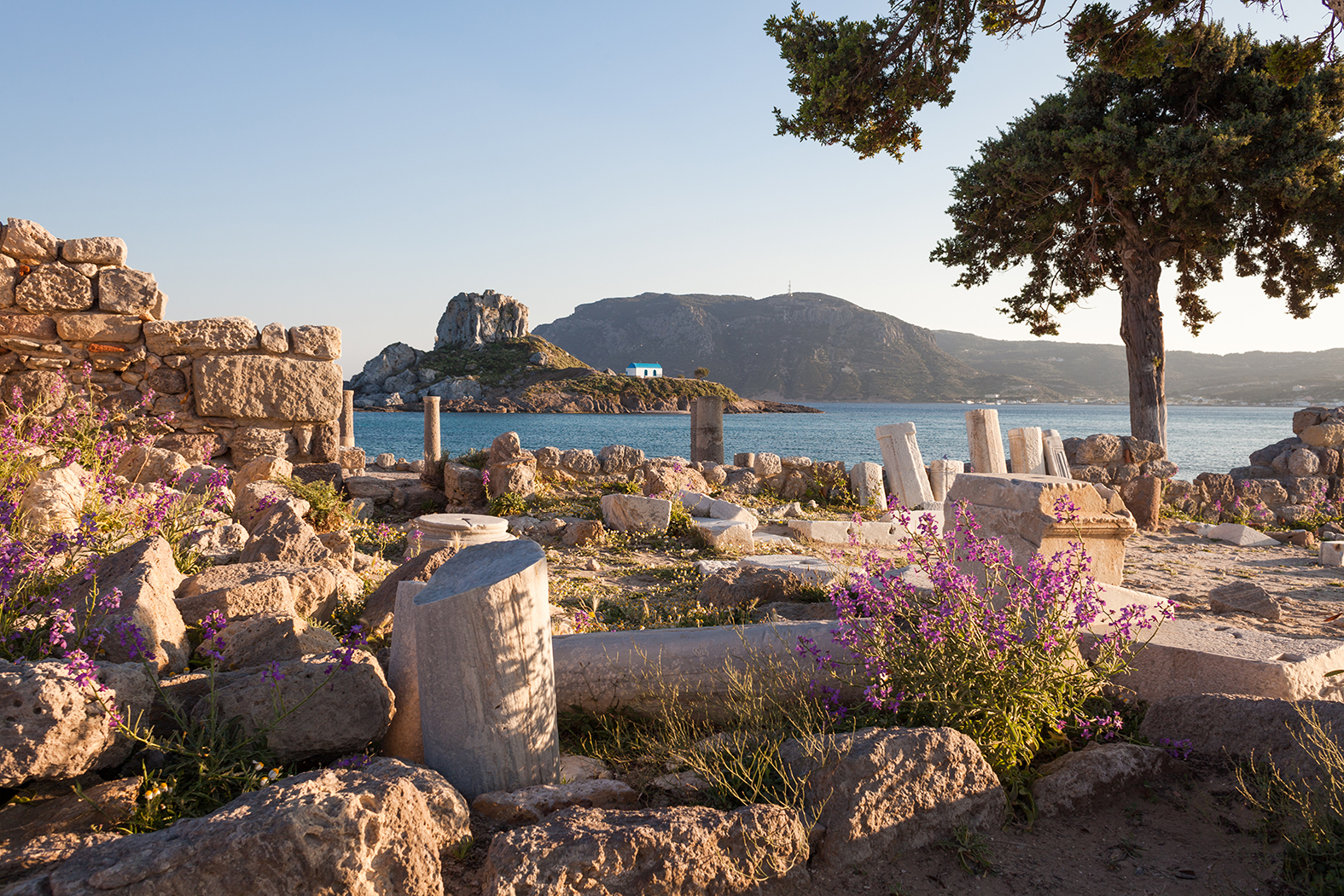
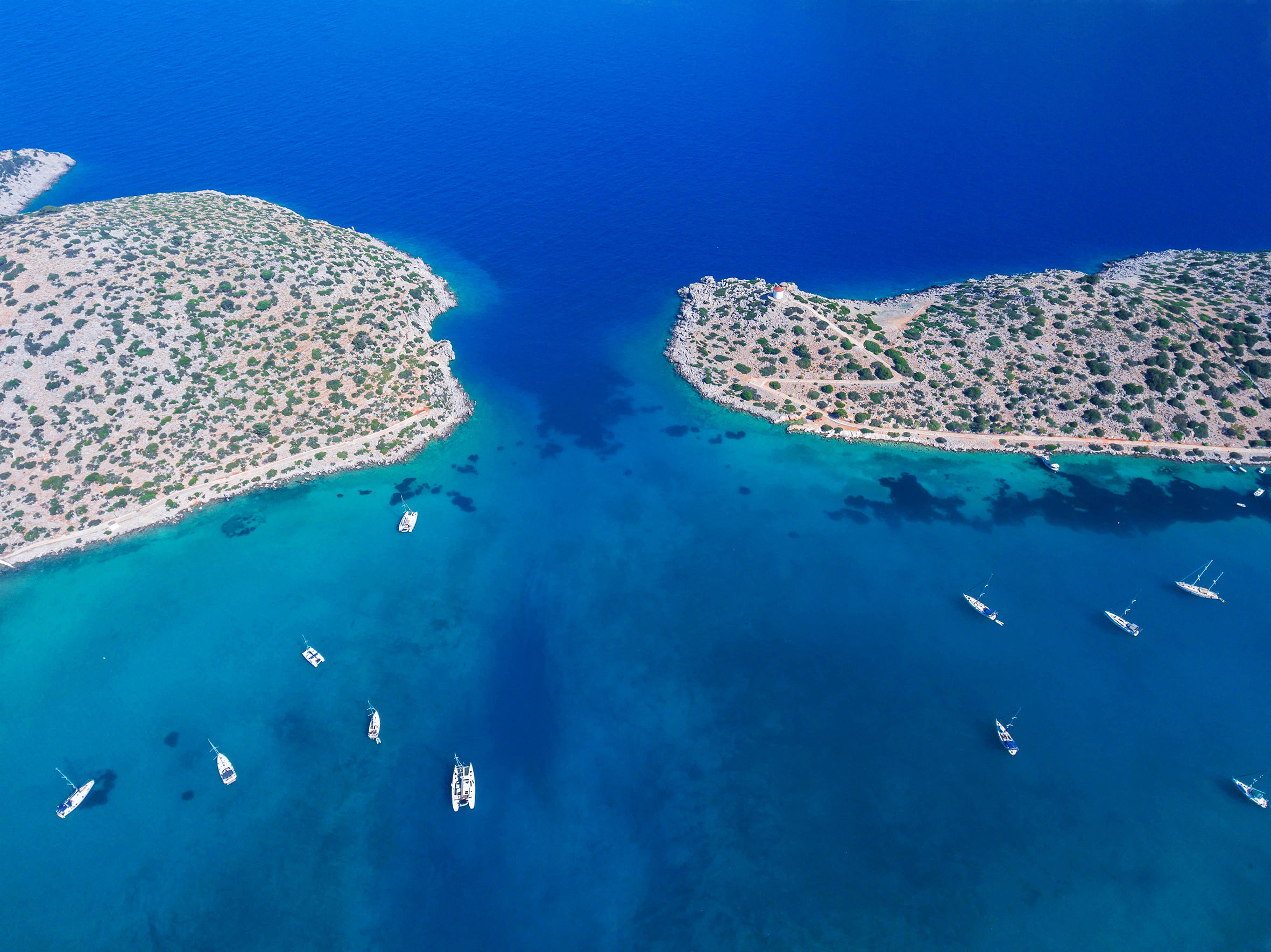
What are the Mooring Fees in Greece?
Greece has a mix of modern marinas and traditional anchorages. While larger towns offer well-equipped marinas, many smaller islands have quaint harbors where you can moor.
Anchorages: Many beautiful coves and bays allow for free anchoring, but it's essential to check local regulations and ensure you're not anchoring in protected areas.
Mooring fees in Greece are generally low in the public ports on the islands. These cannot be pre booked, so arrive before 3pm as berths are limited. The port officers will come to your boat and ask you to pay at the port office. Mooring fees in Greece range from €5 to €15, depending on the island and boat size.
Things to do in Dodecanese
The Dodecanese Islands are a group of 15 major islands and numerous smaller islets in the southeastern Aegean Sea. When sailing the Dodecanese, don’t miss the ancient ruins of Rhodes, particularly the Acropolis of Lindos, which offers breathtaking views. Be sure to stop at the picturesque island of Symi, famous for its colorful neoclassical architecture and tranquil harbor. Finally, explore the serene beaches of Patmos, where you can visit the Monastery of St. John and soak in the island's spiritual ambiance.
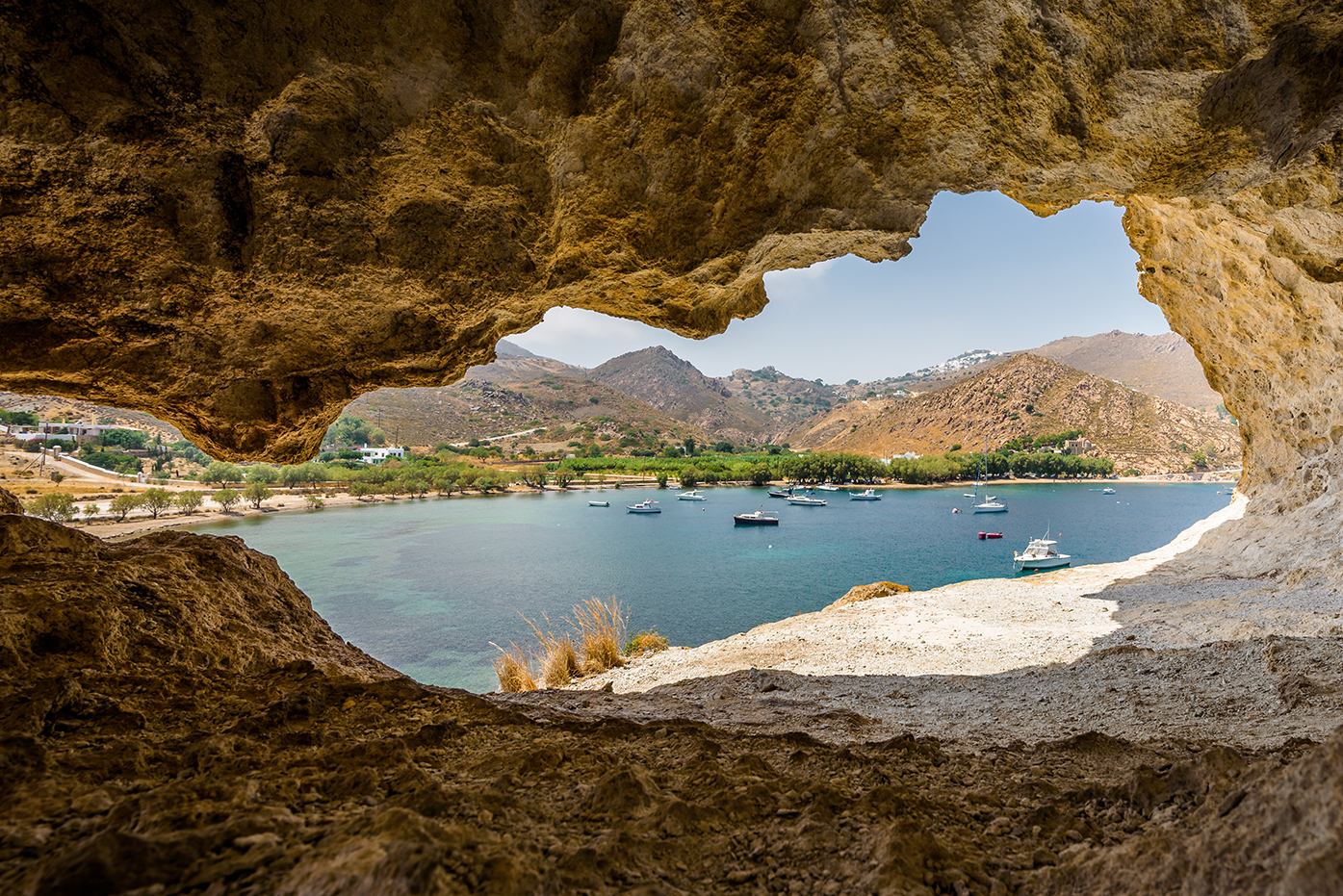
Explore Patmos
Explore the Monastery of St. John and the Cave of the Apocalypse, where tradition holds that St. John received his visions. These sacred sites offer a contemplative experience, allowing visitors to admire ancient frescoes and the cave’s beauty, surrounded by an atmosphere that inspires reflection.
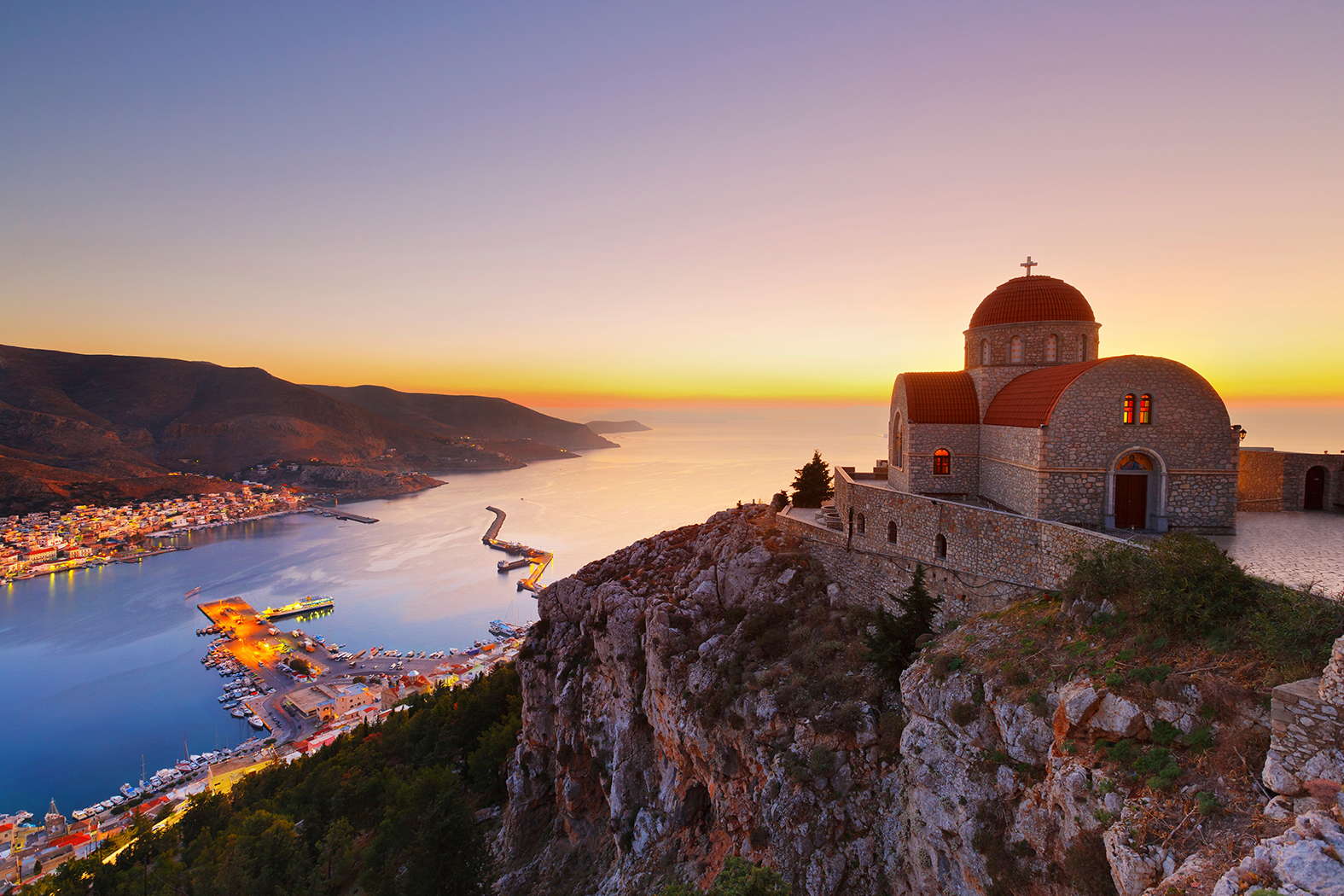
Rock climbing on Kalimnos
Famous for its rich sponge diving heritage, this island also boasts beautiful beaches and exceptional rock climbing. Kalymnos offers more than 2,000 climbing routes on breathtaking limestone cliffs, with options ranging from sport routes to traditional climbs, catering to all skill levels.
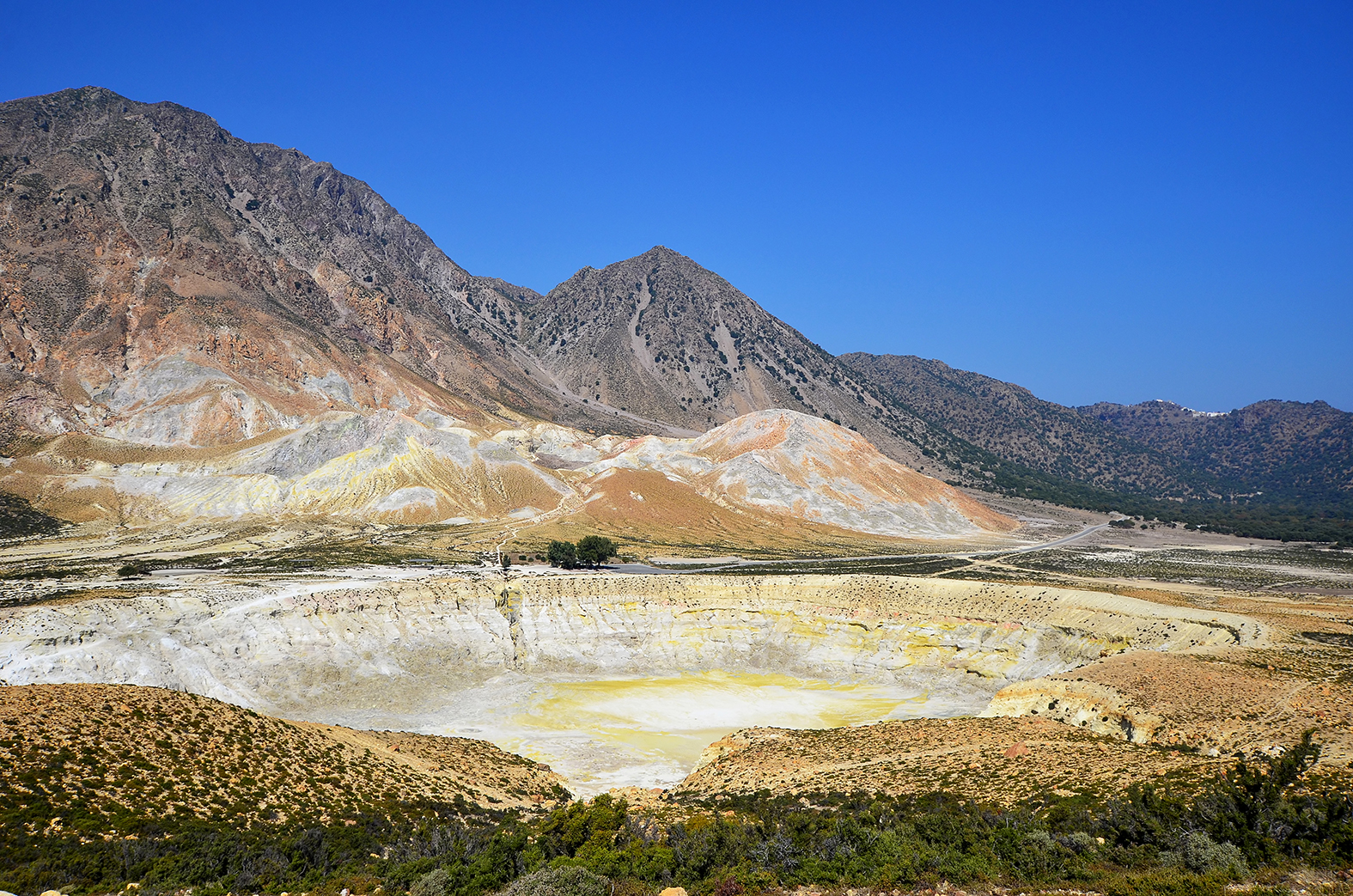
Visit active crater on Nisyros
Discover the dramatic volcanic landscapes and experience the active crater, along with the picturesque village of Mandraki. A scenic hiking trail grants access to the crater, guiding you through volcanic terrain filled with fascinating rock formations.
What are the Sailing Conditions in Dodecanese?
Sailing conditions in Greece include the westerly mistral, a pleasant summer wind that blows in from the sea, reaching its peak force in early afternoon. It refreshes the air and chases away any mugginess.
The prevailing wind meltemi blows from the north-east during summer, peaking in July and August at Force 4 to 6. During spring and autumn, winds are calmer and blow SE.
The best time to sail in the Dodecanese is during the shoulder seasons (April-May and September-October) when the weather is milder and the winds are less intense.
The Dodecanese is particularly well-suited for experienced sailors who enjoy challenging conditions and exploring remote anchorages.
For those new to sailing, islands like Kos and Rhodes offer sheltered bays and calm waters, making them ideal for learning and practicing sailing skills.

Useful Information for Yacht Charter in Dodecanese
Immerse yourself in crystal-clear waters and vibrant islands. With stunning scenery, rich heritage, diverse sailing routes, and warm hospitality, this region is a premier sailing destination.
What language is spoken in Greece?
The official language is Greek, but many people in the main cities and islands speak good English.
How do I get there?
Rhodes International Airport (RHO) is the largest airport in the Dodecanese and serves as a major hub for flights from various European cities. It's the most convenient airport for those starting their sailing adventure in Rhodes.
Kos International Airport (KGS) on the island of Kos also provides excellent connectivity to Europe, ideal for those starting from Kos.
Alternatively, you can fly into Athens International Airport (ATH) and take a domestic flight to Rhodes or Kos, a great choice if you’d like to explore mainland Greece before or after your sailing trip.
While ferries connect some Dodecanese islands and the mainland, flying remains the quickest and most convenient travel option.
What about the internet?
Wi-Fi access in Greece is generally good, especially in urban areas and popular tourist destinations. Almost all charter operators offer Wi-Fi on board.
Local Sim Cards: If you need reliable internet access while on the go, consider getting a local SIM card. Major providers include Cosmote, Vodafone, and Wind. Many shops in cities and airports sell prepaid SIM cards with data plans.
What is the currency in Greece?
The currency in Greece is Euro.
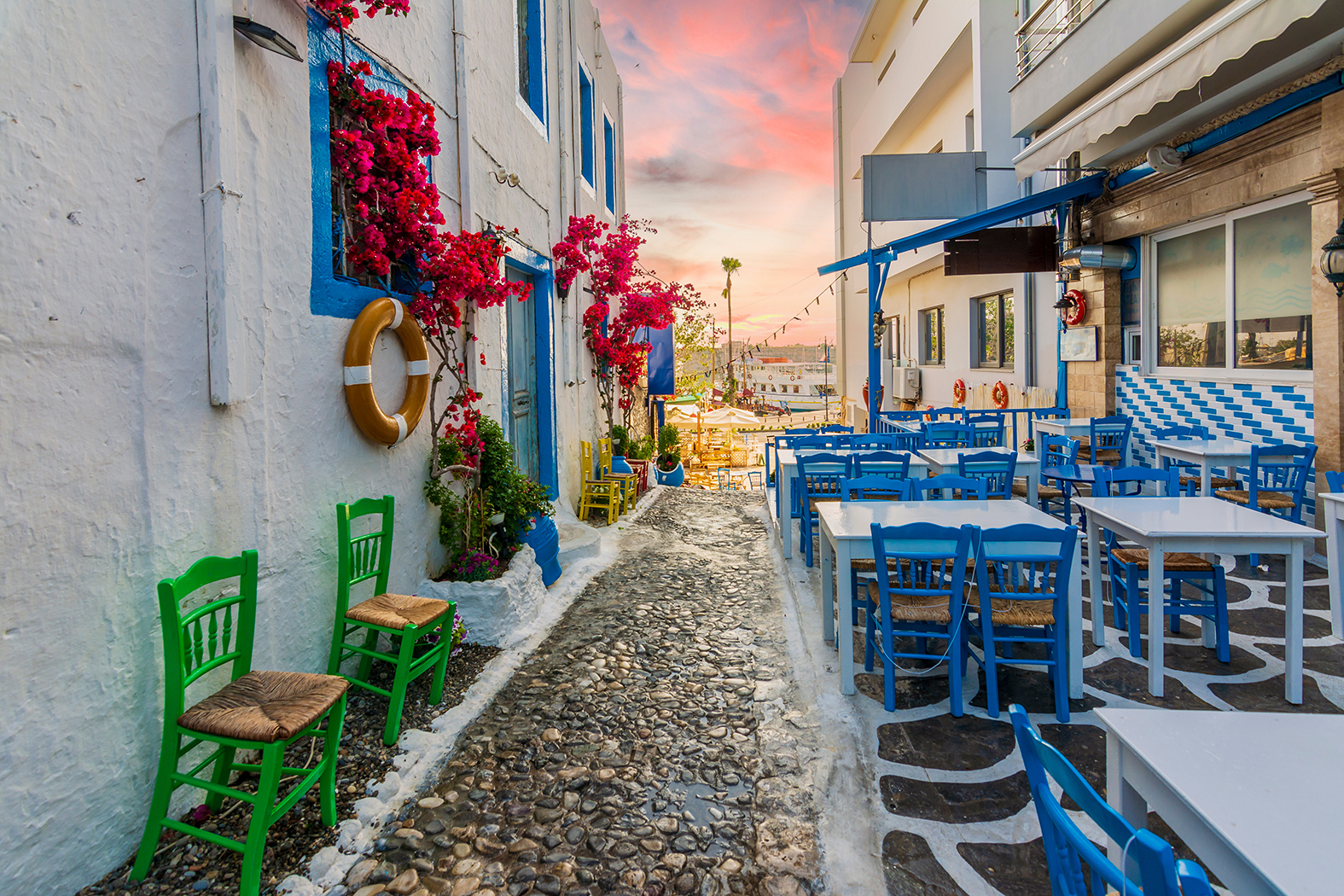
We're here to help you set your sail
Whether you have questions, need advice, or are ready to book your next adventure, our team is here to assist you. Your perfect sailing experience is just a message away—let's start planning today!
